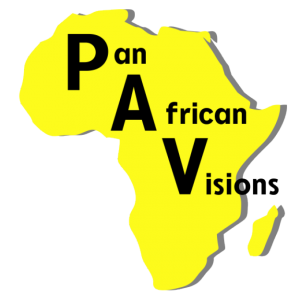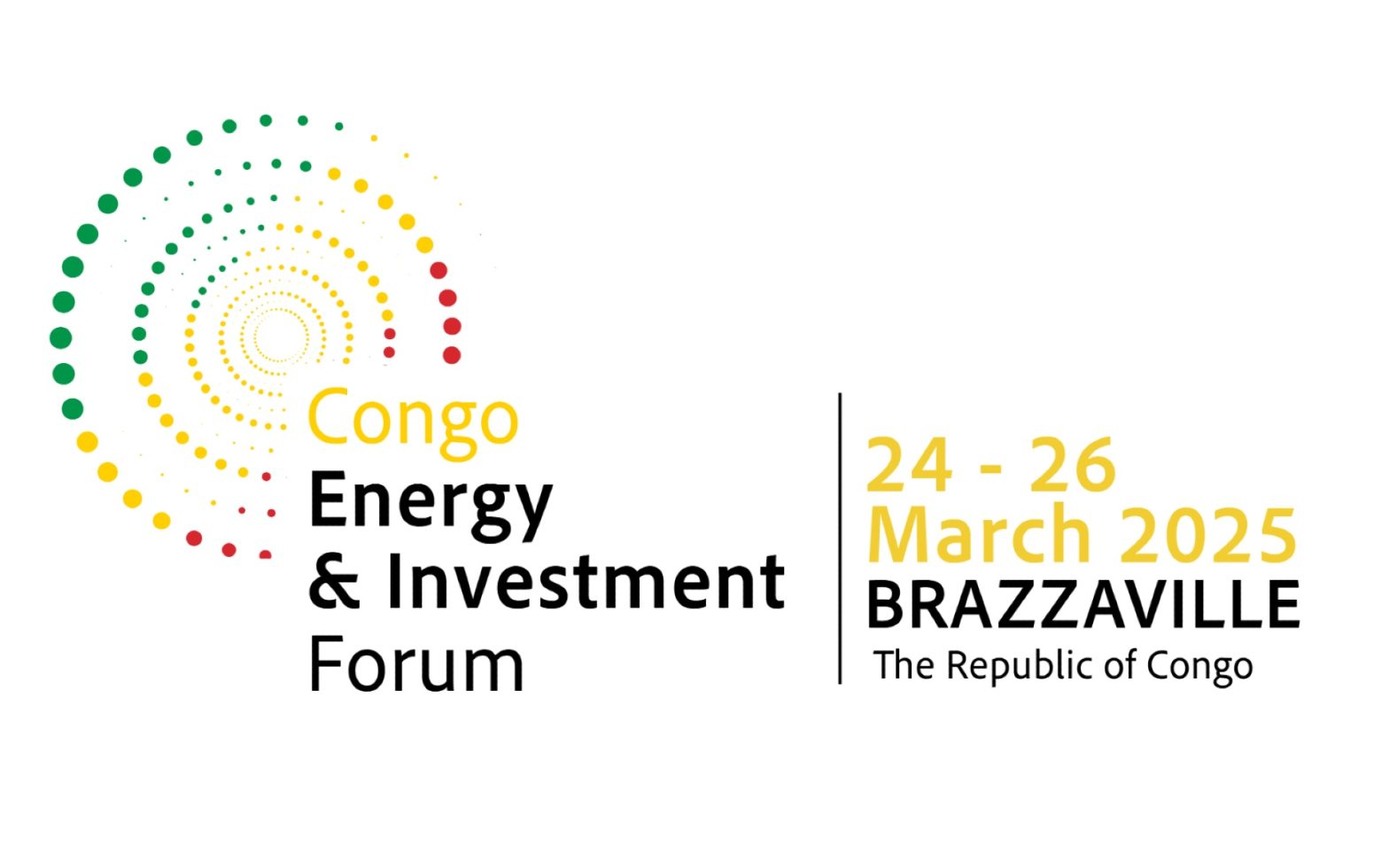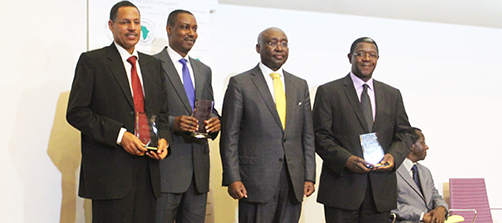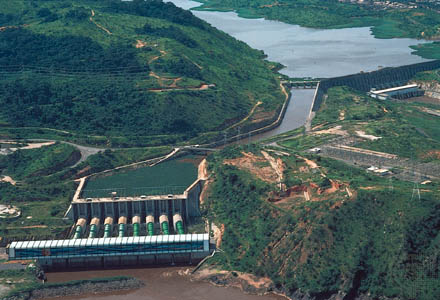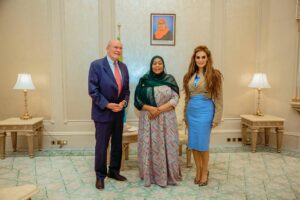AFRICAN DEVELOPMENT BANK In India
June 11, 2017
Bow ties, flashing smiles and the big sell 9th June 2017
[caption id="attachment_38429" align="alignleft" width="300"] African Development Bank president Akinwumi Adesina and Indian Prime Minister Narendra Modi[/caption]
Africa’s biggest bank takes its annual meeting to India as it courts new investors and seeks a massive capital increase The worst is behind us, it is time to invest. That mood music – for the presidents, prime ministers, finance ministers, bankers and chief executives – played throughout the African Development Bank's annual meeting in Gandhinagar, near Ahmedabad, on 23-25 May.
Master of ceremonies was the AfDB's ever upbeat President, Akinwumi Adesina, whose team clearly picked the right host city this year. With Europe and the United States distracted by crises nearer to home, India's government and companies are bullish on Africa. India's business-minded Prime Minister and relentless national booster, Narendra Modi, wants to build on the fast-growing trade ties with the continent (AC Vol 58 No 2, Global shocks, local differences).
Modi's diplomatic air miles rival those of China's President Xi Jinping (AC Vol 57 No 8, Economy thwarts Buhari). 'Since 2015, I have visited six African countries, South Africa, Mozambique, Tanzania, Kenya, Mauritius and Seychelles,' Modi said when opening the meeting. 'Our President has visited three countries, Namibia, Ghana and Ivory Coast. The Vice-President visited seven countries, Morocco, Tunisia, Nigeria, Mali, Algeria, Rwanda and Uganda.
I am proud to say that there is no country in Africa that has not been visited by an Indian minister in the last three years.' As New Delhi and Beijing well know but many Europeans seem to have forgotten, much of African diplomacy is about showing up. India's rising Africa enthusiasms helped Adesina's project. The Nigerian former Agriculture Minister wants investors and Bank shareholders to share his view that Africa is heading for another growth surge. Only then can he push through his expansion plans for the AfDB.
They include a capital increase, a hard sell at the best of times. The AfDB struggled to get financing for its concessional lending arm, the African Development Fund, last year. These are not the worst of times but they remain fragile (see African economy Feature, The great growth divide). The African Economic Outlook, launched at this meeting, forecast growth of 3.4% in 2017; it had fallen to 2.2% last year, its lowest in decades. Commodity prices have stopped sliding but are by no means robust. High five
The AfDB's new investment agenda, summed up as the 'high-five' (power, agriculture, regional integration, industrialisation and quality of life) is clearer than last year. The Bank had a record 2016: disbursements hit $6.5 billion; approvals, $12.5 bn. Each AfDB dollar disbursed has a fourfold multiplier effect, says Adesina. The Bank is ramping up guarantees for investors in risky-looking infrastructure projects. Its private equity infrastructure outfit, called Africa 50, has mobilised $854 million and aims for $1 bn. by December.
regional governors are sceptical, though. Some talk about inconsistencies in the financial reporting. Others say the Bank is not getting value for money from its proposed investments. They cite former AfDB head Babacar Ndiaye's ambitious expansion of the AfDB in the 1990s, which provoked bitter political disputes and the bank losing its AAA credit rating (AC Vol 37 No 7, Funding fall-off). Others gripe about management. A new set of directors has been recruited but there have been high-profile exits, such as Senior Vice-President Frannie Leautier from Tanzania and Senegalese Communications Director Ismaila Dieng. A large cohort of Nigerians has arrived in the Bank. 'Some of them are on American or South African passports. We are being ignored,' complained a senior Bank official from a small African country. However, Adesina's focus on agriculture could pay off handsomely.
His proselytising for farmers fitted well with the tours showcasing India's agricultural revolution. The AfDB's quiet espousal of industrial policy – still anathema to the World Bank and International Monetary Fund – continues. The former Chief Economist at the World Bank, China's Justin Lin, and the AfDB's new Chief Economist, Célestin Monga of Cameroon, argued at their joint book launch for a new generation of special economic zones, to strengthen local companies (AC Vol 49 No 6, The people versus Biya). 'Industrial policy doesn't have to be just linked to manufacturing,' explains Ethiopia's Abebe Shimeles Abebe, acting Director of the AfDB Research Department. India's agro-processing sector is an example.
When Modi was Chief Minister of Gujarat State, of which Gandhinagar is now the capital, there was a relentless pursuit of growth, sometimes at the expense of political accountability. Modi's brand of populism and high-growth economics propelled him to the prime minister's office. Much of his success lay in administrative competence although Gujarat's double-figure growth reflected an upturn across the entire country. A professor at the Indian Institute of Management in Ahmedabad, Anil Kumar Gupta, says Modi's efforts to raise the productivity of small farmers underpinned the state's growth, particularly the building of small dams and irrigation systems.
Under Modi, some 45% of land was irrigated, a 15% improvement, and many more farmers prospered, spreading their wealth into far-flung villages. African delegates examined India's latest farm technology in an exhibition hall next to the Bank meeting. They included a system of solar panels linked to water pumps – roughly $1,500 for a 1HP pump, enough to irrigate a hectare. Subsidised by the national government for 50% of the cost and 40% by the state government, the farmer has to pay just $150. It allows farmers to grow several crops a year and control it with an application on a mobile phone. 'Fashionomics'
Replete with his signature bow-tie, Adesina spoke of the need to change mindsets in farming: 'We need to make agriculture the coolest thing for the youth.' Stars of India's film industry, 'Bollywood', and Nigeria's 'Nollywood' took the stage together for a session of 'Fashionomics'. Their mind-bending mission was to describe – in a star-studded drama – the chain of production, from high fashion to the textile industry and then to the cotton growers. Next, Ghana's former President, John Mahama, joined a chorus of young African 'agripreneurs' on stage to explain that agriculture is serious business.
The way, says Mahama, to show that agriculture is cool, is to 'show that you can make serious money'. There are other Indian policies that Africa might imitate. For the Chief Executive Officer of the Nairobi-based African Guarantee Fund, Felix Adahi Bikpo, the advantage of coming to Ahmedabad was that the chaos and colour and mass poverty visible from the road reminds African delegations that India has much in common with the continent. 'It is not so different from back home, and yet they have power, they are building.' Modi rocked India with his 'demonetisation' policy: to move the country away from a cash economy and towards a formal banking sector. Over 250 million free bank accounts were created with biometric identity cards, allowing more accurate targeting of subsidies. Large denomination notes were outlawed and replaced, angering the politicians and businesspeople who had stashed huge sums. 'The people who were crying foul were doing so not because they had sympathy for the common man but because it would hurt them most,' a British-based academic told Africa Confidential.
He pointed to a cash haul of $43 mn. found by Nigerian anti-corruption enforcers in a Lagos flat in April. Some Nigerian officials looking to give a fillip to their government's anti-corruption campaign have been studying the 'Modi effect' – high-growth economic strategies twinned with an authoritarian style of pushing through public policy. The African Bank's Love Affair with Asia Bringing the African Development Bank annual general meeting to India is a bold statement of intent by the hosts.
The arrival of the yearly jamboree followed a long courtship by New Delhi. The Export-Import Bank of India had worked hard to drum up interest. China's US$3 trillion 'One Belt One Road' infrastructure programme plans massive investment along a modern version of the old Silk Road linking China to Europe. India is boycotting it, which shows how Asian rivalries could be projected on to Africa. New Delhi is partnering with Japan to create an 'Asia-Africa growth corridor'. Tokyo sent its deputy Finance Minister to the AfDB gathering in Gandhinagar (which is named after the late Mahatma Gandhi) to make the case.
A cultural evening featuring Indian and African dancers showed the breadth of ties. 'Historically, communities from western India, especially Gujarat, and the eastern coast of Africa have settled in each other's lands,' said India's Premier, Narendra Modi. 'The Siddhis of India are said to have come from East Africa. The Bohra communities in coastal Kenya date back to the twelfth century. Vasco da Gama [a Portuguese explorer] is said to have reached Calicut with the help of a Gujarati sailor from Malindi.'
Trade between India and Africa thrived during the last commodity boom. Bilateral trade was at $1 billion in 1995; in 2015, it hit $75 bn.; it should break $100 bn, by 2018, according to the AfDB. Like Japan and China, India focuses on East Africa and long has done so: the gas and coal reserves in Mozambique and Tanzania attract Indian heavyweights such as the Oil and Natural Gas Corporation Limited and Coal India; the big consumer markets of South Africa and Kenya are targets for Indian exporters. Modi wants India to claim the next 30 years just as China's 'peaceful rise' has dominated the last 30.
New data from Yi Fuxian, at the University of Wisconsin's School of Medicine and Public Health in Madison, suggests India's population (1.33 billion) overtook China's (1.29 billion) at the end of last year. The AfDB's own turning to Asia continues. Its meeting next year will be in Busan (ex-Pusan), South Korea. Taken with its meeting in Shanghai in 2007, that makes three Asian safaris in eleven years. By contrast, Europe has hosted the Bank just once in that period.
*Africa Confidential
African Development Bank president Akinwumi Adesina and Indian Prime Minister Narendra Modi[/caption]
Africa’s biggest bank takes its annual meeting to India as it courts new investors and seeks a massive capital increase The worst is behind us, it is time to invest. That mood music – for the presidents, prime ministers, finance ministers, bankers and chief executives – played throughout the African Development Bank's annual meeting in Gandhinagar, near Ahmedabad, on 23-25 May.
Master of ceremonies was the AfDB's ever upbeat President, Akinwumi Adesina, whose team clearly picked the right host city this year. With Europe and the United States distracted by crises nearer to home, India's government and companies are bullish on Africa. India's business-minded Prime Minister and relentless national booster, Narendra Modi, wants to build on the fast-growing trade ties with the continent (AC Vol 58 No 2, Global shocks, local differences).
Modi's diplomatic air miles rival those of China's President Xi Jinping (AC Vol 57 No 8, Economy thwarts Buhari). 'Since 2015, I have visited six African countries, South Africa, Mozambique, Tanzania, Kenya, Mauritius and Seychelles,' Modi said when opening the meeting. 'Our President has visited three countries, Namibia, Ghana and Ivory Coast. The Vice-President visited seven countries, Morocco, Tunisia, Nigeria, Mali, Algeria, Rwanda and Uganda.
I am proud to say that there is no country in Africa that has not been visited by an Indian minister in the last three years.' As New Delhi and Beijing well know but many Europeans seem to have forgotten, much of African diplomacy is about showing up. India's rising Africa enthusiasms helped Adesina's project. The Nigerian former Agriculture Minister wants investors and Bank shareholders to share his view that Africa is heading for another growth surge. Only then can he push through his expansion plans for the AfDB.
They include a capital increase, a hard sell at the best of times. The AfDB struggled to get financing for its concessional lending arm, the African Development Fund, last year. These are not the worst of times but they remain fragile (see African economy Feature, The great growth divide). The African Economic Outlook, launched at this meeting, forecast growth of 3.4% in 2017; it had fallen to 2.2% last year, its lowest in decades. Commodity prices have stopped sliding but are by no means robust. High five
The AfDB's new investment agenda, summed up as the 'high-five' (power, agriculture, regional integration, industrialisation and quality of life) is clearer than last year. The Bank had a record 2016: disbursements hit $6.5 billion; approvals, $12.5 bn. Each AfDB dollar disbursed has a fourfold multiplier effect, says Adesina. The Bank is ramping up guarantees for investors in risky-looking infrastructure projects. Its private equity infrastructure outfit, called Africa 50, has mobilised $854 million and aims for $1 bn. by December.
regional governors are sceptical, though. Some talk about inconsistencies in the financial reporting. Others say the Bank is not getting value for money from its proposed investments. They cite former AfDB head Babacar Ndiaye's ambitious expansion of the AfDB in the 1990s, which provoked bitter political disputes and the bank losing its AAA credit rating (AC Vol 37 No 7, Funding fall-off). Others gripe about management. A new set of directors has been recruited but there have been high-profile exits, such as Senior Vice-President Frannie Leautier from Tanzania and Senegalese Communications Director Ismaila Dieng. A large cohort of Nigerians has arrived in the Bank. 'Some of them are on American or South African passports. We are being ignored,' complained a senior Bank official from a small African country. However, Adesina's focus on agriculture could pay off handsomely.
His proselytising for farmers fitted well with the tours showcasing India's agricultural revolution. The AfDB's quiet espousal of industrial policy – still anathema to the World Bank and International Monetary Fund – continues. The former Chief Economist at the World Bank, China's Justin Lin, and the AfDB's new Chief Economist, Célestin Monga of Cameroon, argued at their joint book launch for a new generation of special economic zones, to strengthen local companies (AC Vol 49 No 6, The people versus Biya). 'Industrial policy doesn't have to be just linked to manufacturing,' explains Ethiopia's Abebe Shimeles Abebe, acting Director of the AfDB Research Department. India's agro-processing sector is an example.
When Modi was Chief Minister of Gujarat State, of which Gandhinagar is now the capital, there was a relentless pursuit of growth, sometimes at the expense of political accountability. Modi's brand of populism and high-growth economics propelled him to the prime minister's office. Much of his success lay in administrative competence although Gujarat's double-figure growth reflected an upturn across the entire country. A professor at the Indian Institute of Management in Ahmedabad, Anil Kumar Gupta, says Modi's efforts to raise the productivity of small farmers underpinned the state's growth, particularly the building of small dams and irrigation systems.
Under Modi, some 45% of land was irrigated, a 15% improvement, and many more farmers prospered, spreading their wealth into far-flung villages. African delegates examined India's latest farm technology in an exhibition hall next to the Bank meeting. They included a system of solar panels linked to water pumps – roughly $1,500 for a 1HP pump, enough to irrigate a hectare. Subsidised by the national government for 50% of the cost and 40% by the state government, the farmer has to pay just $150. It allows farmers to grow several crops a year and control it with an application on a mobile phone. 'Fashionomics'
Replete with his signature bow-tie, Adesina spoke of the need to change mindsets in farming: 'We need to make agriculture the coolest thing for the youth.' Stars of India's film industry, 'Bollywood', and Nigeria's 'Nollywood' took the stage together for a session of 'Fashionomics'. Their mind-bending mission was to describe – in a star-studded drama – the chain of production, from high fashion to the textile industry and then to the cotton growers. Next, Ghana's former President, John Mahama, joined a chorus of young African 'agripreneurs' on stage to explain that agriculture is serious business.
The way, says Mahama, to show that agriculture is cool, is to 'show that you can make serious money'. There are other Indian policies that Africa might imitate. For the Chief Executive Officer of the Nairobi-based African Guarantee Fund, Felix Adahi Bikpo, the advantage of coming to Ahmedabad was that the chaos and colour and mass poverty visible from the road reminds African delegations that India has much in common with the continent. 'It is not so different from back home, and yet they have power, they are building.' Modi rocked India with his 'demonetisation' policy: to move the country away from a cash economy and towards a formal banking sector. Over 250 million free bank accounts were created with biometric identity cards, allowing more accurate targeting of subsidies. Large denomination notes were outlawed and replaced, angering the politicians and businesspeople who had stashed huge sums. 'The people who were crying foul were doing so not because they had sympathy for the common man but because it would hurt them most,' a British-based academic told Africa Confidential.
He pointed to a cash haul of $43 mn. found by Nigerian anti-corruption enforcers in a Lagos flat in April. Some Nigerian officials looking to give a fillip to their government's anti-corruption campaign have been studying the 'Modi effect' – high-growth economic strategies twinned with an authoritarian style of pushing through public policy. The African Bank's Love Affair with Asia Bringing the African Development Bank annual general meeting to India is a bold statement of intent by the hosts.
The arrival of the yearly jamboree followed a long courtship by New Delhi. The Export-Import Bank of India had worked hard to drum up interest. China's US$3 trillion 'One Belt One Road' infrastructure programme plans massive investment along a modern version of the old Silk Road linking China to Europe. India is boycotting it, which shows how Asian rivalries could be projected on to Africa. New Delhi is partnering with Japan to create an 'Asia-Africa growth corridor'. Tokyo sent its deputy Finance Minister to the AfDB gathering in Gandhinagar (which is named after the late Mahatma Gandhi) to make the case.
A cultural evening featuring Indian and African dancers showed the breadth of ties. 'Historically, communities from western India, especially Gujarat, and the eastern coast of Africa have settled in each other's lands,' said India's Premier, Narendra Modi. 'The Siddhis of India are said to have come from East Africa. The Bohra communities in coastal Kenya date back to the twelfth century. Vasco da Gama [a Portuguese explorer] is said to have reached Calicut with the help of a Gujarati sailor from Malindi.'
Trade between India and Africa thrived during the last commodity boom. Bilateral trade was at $1 billion in 1995; in 2015, it hit $75 bn.; it should break $100 bn, by 2018, according to the AfDB. Like Japan and China, India focuses on East Africa and long has done so: the gas and coal reserves in Mozambique and Tanzania attract Indian heavyweights such as the Oil and Natural Gas Corporation Limited and Coal India; the big consumer markets of South Africa and Kenya are targets for Indian exporters. Modi wants India to claim the next 30 years just as China's 'peaceful rise' has dominated the last 30.
New data from Yi Fuxian, at the University of Wisconsin's School of Medicine and Public Health in Madison, suggests India's population (1.33 billion) overtook China's (1.29 billion) at the end of last year. The AfDB's own turning to Asia continues. Its meeting next year will be in Busan (ex-Pusan), South Korea. Taken with its meeting in Shanghai in 2007, that makes three Asian safaris in eleven years. By contrast, Europe has hosted the Bank just once in that period.
*Africa Confidential
